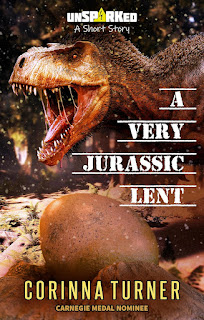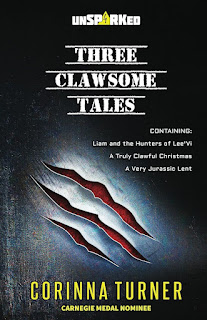Wolf of Mars
A Rescue Sisters Story
Laser Cow Press
ISBN 9781956489262
ASIN B0FYRVMFBM
Wow! What an excellent story and great news! This story is a little more fun, and some serious comedy, all wrapped up in a moving tale.
Before the story begins there is a dedication and a bible verse. The dedication is:
“Dedicated to anyone whose had a bad day at work. I feel ya!”
And the verse is Jeremiah 29:11:
“For I know well the plans I have in mind for you…plans for your welfare and not for woe, so as to give you a future of hope.”
The two tie together and to the story in very meaningful ways. About the history of the Rescue Sisters we are told:
“The order started on the L5 station, which is on the LaGrange trailing the moon. Gillian (Later St. Gillian of L5) was the wife of the inventor of artificial gravity. Ironically, he was so severely injured in an accident with his machine that he could no longer manage in Earth’s gravity, so she left Earth to join him on L5. After his death, she took holy vows and petitioned to start an order of religious sisters in outer space.
While they do many things, Gillian chose search and rescue for the mission because it was a high-demand, high-risk operation that commanded high prices. By doing the work for “air, supplies and the love of God,” they paved the way for their religious order to grow.
Skirts would be inconvenient and potentially embarrassing if the artificial gravity cut out, so Gillian chose wide-legged pants and a simple T-shirt under the skinsuit. The practical habit caused some scandal but was eventually accepted on stations and low-gravity environments, and grudgingly allowed “dirtside.”
Under Gillian’s leadership, the order grew to several locations, including L5 and Phobos, where there’s a training convent. When she died, spacers claimed to have seen her apparition and credited her with saving them from accidents or other perils. Many of these miracles were confirmed and she was sainted.”
Right after that we are informed:
“We have several other stories with these sisters, which I’m going to start publishing.”
That is great news. I have loved all the Rescue Sisters stories to date, and really do look forward to more stories set in this universe. About this story Fabian states:
“This is a story I’ve wanted to write for ages. I got the idea from the filk song, “An Asteroid Named Rest Stop” by Julia Ecklar. (In fact, it’s the second story inspired by filk songs.) I loved the thought of a pilot having such a bad day it makes her want to become a religious sister. I started the story at least a decade ago, but didn’t know where I wanted to take it. Sometimes, a story just needs to sit.
I’d like to especially thank the Catholic Writers Guild SFF Crit group for all their wonderful comments, especially their encouragement to portray the Mass less “in terms of any joy, or any emotional reward for it, but the terrible necessity of it.” (as Mark Baker eloquently put it.) Or as Rena said, “This should be Mass with toddlers.” Thanks, Rena Shannon, G.M. Baker, Matthew Schmidt, and Marie Keiser.”
I had to look up the meaning of filk song:
“Filk is a genre of folk music written and performed by science fiction and fantasy fans, with songs often featuring themes from these genres. The name "filk" originated from a typo of "folk" and has been adopted by the community, which includes song parodies, original compositions, and music about topics like science, computers, and cats. It is a cultural phenomenon as much as a musical one, with a strong tradition of informal singing circles at conventions and gatherings.”
And it just feels right. The description of this story states:
“The Zaniest Rescue Sisters Story Yet!
Rae Marie Martingale loved to fly. What she didn’t love was working for Waylaid Transport and Shipping, possibly the worst hauling company in the entire asteroid belt. Case in When she was tagged to fly Lucky Charms to Ceres for a much-needed overhaul, the Company decided to stick her with a cargo of live turkeys, drunks needing a quick exit from Waylaid Station—and a priest who thinks she’s a good candidate for the Rescue Sisters.
When the turkeys get loose, pirates attack, and her incompetent chief engineer breaks the ship, it’s shaping up to be a bad day. But maybe that’s the perfect time for God to come calling?”
A traveling priest, a pilot trying to save up to get better credentials, a cargo hold full of turkeys, a very green engineer and a bunch of drunken passengers. What could go wrong? Well as Murphy gives us Irishmen a bad name, if something can go wrong it, will, and the worst thing that can go wrong will go wrong. But Rae Marie Martingale proves not only up to the challenges, she excels. And let’s not forget about pirates, and a side bet between a priest and a business mogul. So much packed tightly into this excellent short story.
This is an awesome story in an amazing series. Fabian has several series that I love. But the Rescue sisters are among my favourites. Every time a new one releases It immediately jumps to the top of my ‘to be read’ pile. Many years ago I read Sacred Visions that was edited by Father Andrew M. Greeley, since that time I have read some terrible stories and some truly inspired fiction. Some of my all-time favourite stories now are religious, and specifically Catholic Fiction. Fabian is one of the best!
I know I will return to the Rescue Sisters series again and reread the novel and the stories. This is an excellent work of short fiction and I highly recommend it!
Books by Karina Fabian:
Dex Hollister Series:
The Old Man and the Void
Dex's Way
...
Neeta Lyffe, Zombie Exterminator Series :
Neeta Lyffe, Zombie Exterminator
I Left My Brains in San Francisco
Shambling in a Winter Wonderland
…
DragonEye PI Series:
DragonEye PI Novels:
6.0 Siren Spell
7.0 Good Intentions
9.0 Gapman
11.0 Live and Let Fly (Revised edition forthcoming)
...
DragonEye PI Short Stories:
DragonEye PI Original First Editions:
...
Space Traipse Series:
Space Traipse: Hold My Beer, Season 1
Space Traipse: Hold My Beer, Season 2
Space Traipse: Hold My Beer, Season 3
Edited by: Karina Fabian:
Infinite Space, Infinite God I
Leaps of Faith
Infinite Space, Infinite God II
...
Contributed to:
Firestorm of Dragons
The Zombie Cookbook
The Book of Tentacles
Twisted Fayrie Tales
FRIGHTLINER: And Other Tales of the Undead
Mother Goose is Dead
Word by Word: Slowing Down with the Hail Mary
Image and Likeness Literary Reflections on the Theology of the Body
Corrupts Absolutely? Dark Metahuman Fiction
Weird Noir
The Complete Guide to Writing Paranormal Novels
Manifesto UF
Avenir Eclectia
Planetary Anthology: Jupiter
Planetary Anthology: Pluto
Planetary Anthology: Luna
Planetary Anthology: Uranus
FlagShip Science Fiction and Fantasy v2i5
My Little Book of Headdesks
To Be Men: Stories Celebrating Masculinity
Space Traipse Stories
…
Madness of Kanaan Series:
(formerly The Mind Over Series)
Edited by: Karina Fabian:
Infinite Space, Infinite God I
Leaps of Faith
Infinite Space, Infinite God II
...
Nonfiction with Deacon Steven Lumbert:
Contributed to:
Firestorm of Dragons
The Zombie Cookbook
The Book of Tentacles
Twisted Fayrie Tales
FRIGHTLINER: And Other Tales of the Undead
Mother Goose is Dead
Word by Word: Slowing Down with the Hail Mary
Image and Likeness Literary Reflections on the Theology of the Body
Corrupts Absolutely? Dark Metahuman Fiction
Weird Noir
The Complete Guide to Writing Paranormal Novels
Manifesto UF
Avenir Eclectia
Planetary Anthology: Jupiter
Planetary Anthology: Pluto
Planetary Anthology: Luna
Planetary Anthology: Uranus
FlagShip Science Fiction and Fantasy v2i5
My Little Book of Headdesks
To Be Men: Stories Celebrating Masculinity
...






































